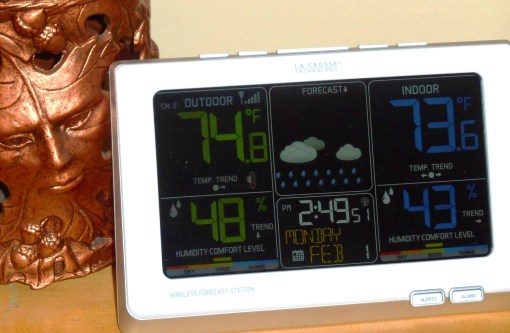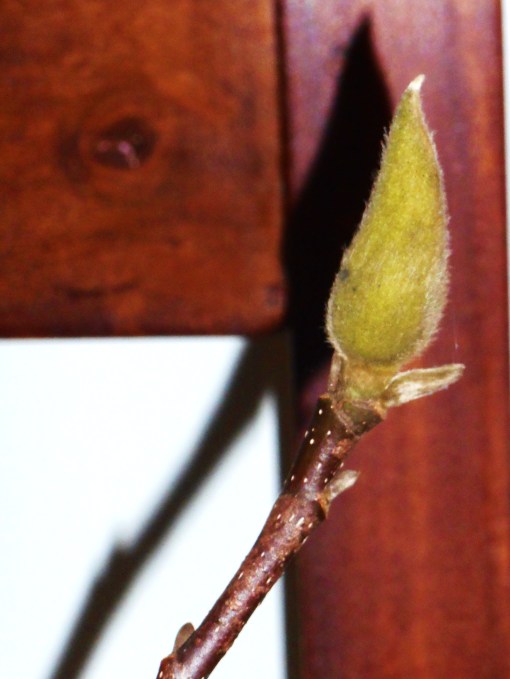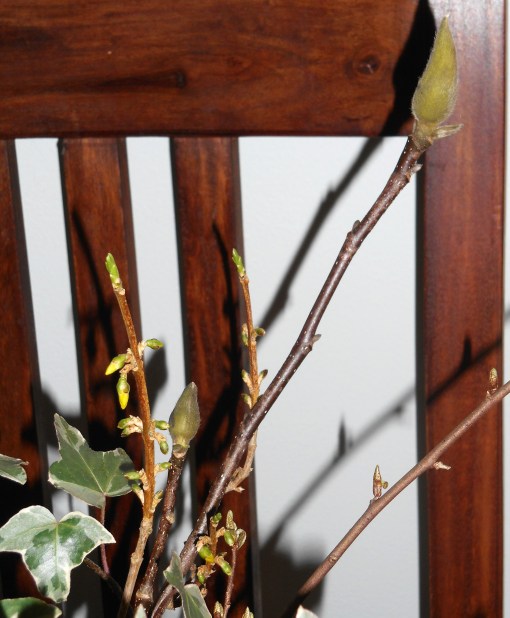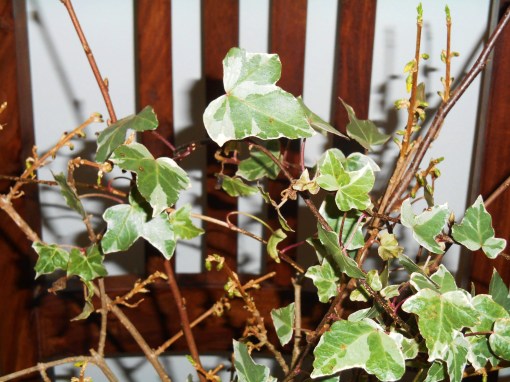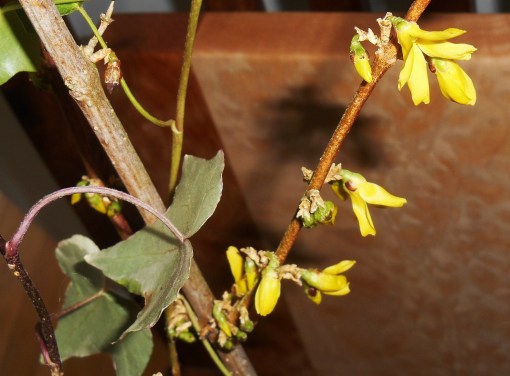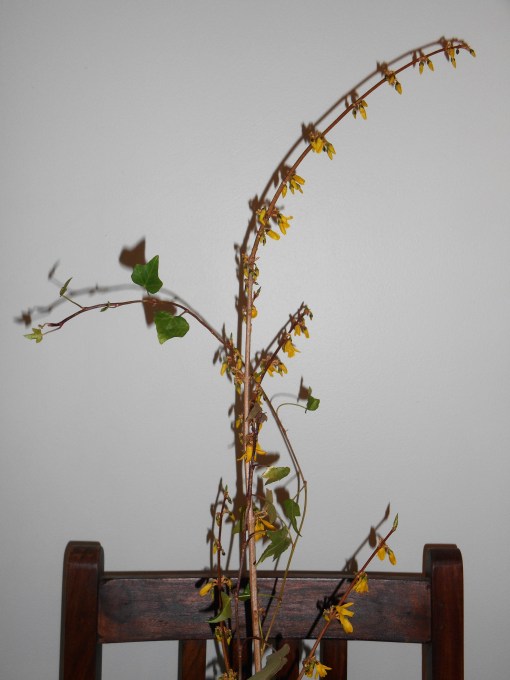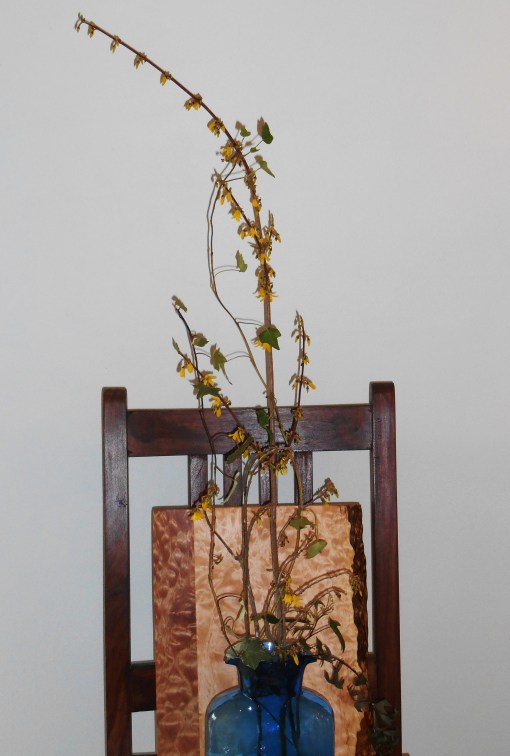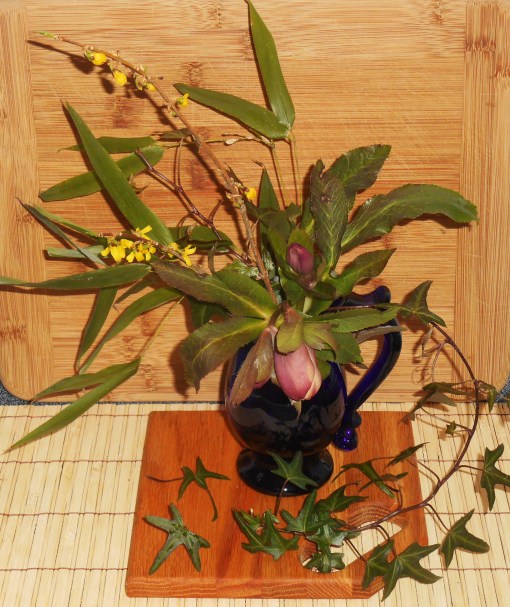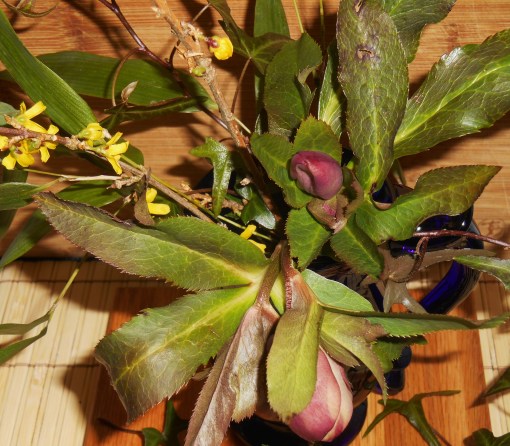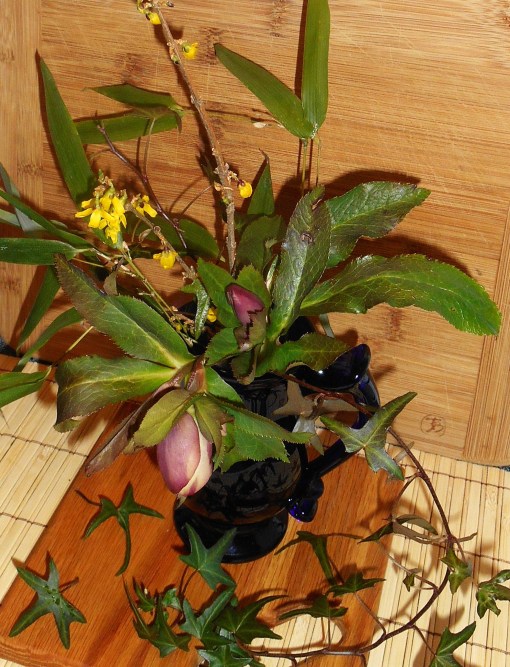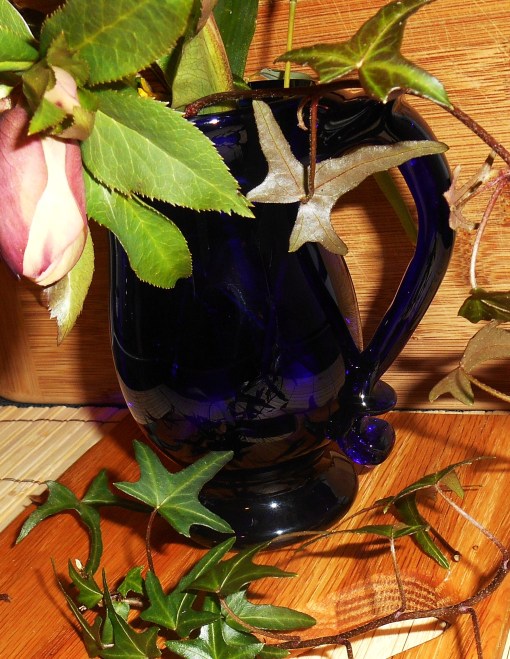
~
Evergreen treasurers, often overlooked during the warmer months, grow in importance as summer’s foliage blows away on autumn breezes.
~

~
We notice that nearby forests are filled with a small army of shining holly trees, covered in bright red berries. Clumps of mistletoe hover in the bare branches of nearby trees.
~

~
And, we are grateful for the beautiful green and cream leaves of our stalwart ivies growing in pots and garden beds.
~

A grapevine fills this pot all summer, but ivy anchors it on our deck during the winter months. Newly planted Violas will bloom sometime in the next few weeks.
~
There are many varieties of ivy available. Find leaves large and small, wide or very narrow, green, yellow, cream and variegated.
~

The smallest leafed ivy I’ve ever found, this lovely little cultivar was sold for terrariums and fairy gardens. It is growing indoors this winter with a little Begonia.
~
Now, native plant purists positively scowl at any kind word uttered about ivy. It is not native by any stretch of the imagination, though it has naturalized throughout much of the United States. Worse, ivy can escape cultivation and grow invasive. This is a problem when ivy completely enshrouds a tree.
~

Ivy covers these trees in a county park near Jamestown, VA.
~
This vigorous vine can shade out the tree, eventually killing it, and break it apart with the strength and weight of its growth.
~

Ivy was already growing on this mature beech tree when we came to the garden. The vine grows root-like anchors, but doesn’t suck sap from the tree. Ivy keeps its roots firmly in the ground and makes its own food from photosynthesis. These aerial roots may absorb dew and rainwater, but they don’t take anything from the tree.
~
The ivy you or I plant this fall likely wouldn’t kill a tree in our own lifetimes. This takes decades. However, our ivy may escape into the wild when we are no longer tending it for whatever reason, or, the ivy may eventually form berries, and those ivy seeds may germinate elsewhere.
~

Ivy makes a popular low maintenance ground cover. Keep it trimmed back, and away from your tree trunks.
~
You can puzzle out the relative morality of ivy on your own terms and in your own garden. But I will tell you that I admire it for its tenacity and toughness.
~

~
Ivy offers some benefits for wildlife. It shelters many sorts of insects, and so helps attract birds to the garden. It can produce berries, once the vine is mature.
~

English Ivy, Hedera helix, serves as a dense, evergreen ground cover in many Colonial Williamsburg gardens. It requires little maintenance beyond periodic trimming.
~
It tolerates dry soil, sun, shade, heat and cold. It can be cut back hard and still re-grow into a lush plant in a season.
~

Newly planted Hellebore and ivy will soon fill this pot with evergreen beauty. The Hellebore will begin blooming early in the new year.
~
It will fill a hanging basket beautifully, and remain lovely all winter long through the worst weather we might face here in Zone 7.
Ivy is very useful as the ‘spiller’ in potted arrangements. I especially enjoy using it in pots where the main plants are perennials, and the pot won’t be re-worked year to year. After several years, the ivy can take the pot without worthy competition, however.
~

New Year’s Day 2017, and this basket of ivy looks fabulous.
~
Let it trail, or train it on a trellis or other wire form. Ivy can be groomed into many interesting shapes, grown on wire mesh orbs as a ‘kissing ball,’ or even grown on a privacy screen or a fence.
If you place a rooted cutting in a vial of water or plant its roots into damp moss and a little peat, you can even grow it on a living wreath enjoyed on a shaded porch. Just keep the wreath hydrated and out of direct sun.
~

Violas and ivy make a beautiful winter hanging basket in our climate.
~
Just remember the Ivy rule: The first year it sleeps, the second it creeps, and the third, it leaps! This is a lovely vine that takes some time to work its magic.
~

~
In the best of possible worlds, deer generally leave ivy alone. But we don’t live in that world, and find our ivy grazed from time to time. Generally, it isn’t even noticeable.
~
 ~
~
But deer did seriously dine on a beautiful new ivy in a pot this fall. Like with most new plants, spray it or otherwise protect it if deer frequent your garden.
~

~
We are admiring our ivy on this Fabulous Friday. If your green thumb is itching to grow something easy and rewarding during the cool months ahead, you might search out a beautiful ivy for your winter pots or baskets.
~

Now that our stump is losing its bark, I’ve planted ivy in the pot. Beautiful ivy will soon cover it all in a curtain of green.
~
Fabulous Friday: Happiness is contagious…
Let’s infect one another!
~

~
Woodland Gnome 2017






























 ~
~














